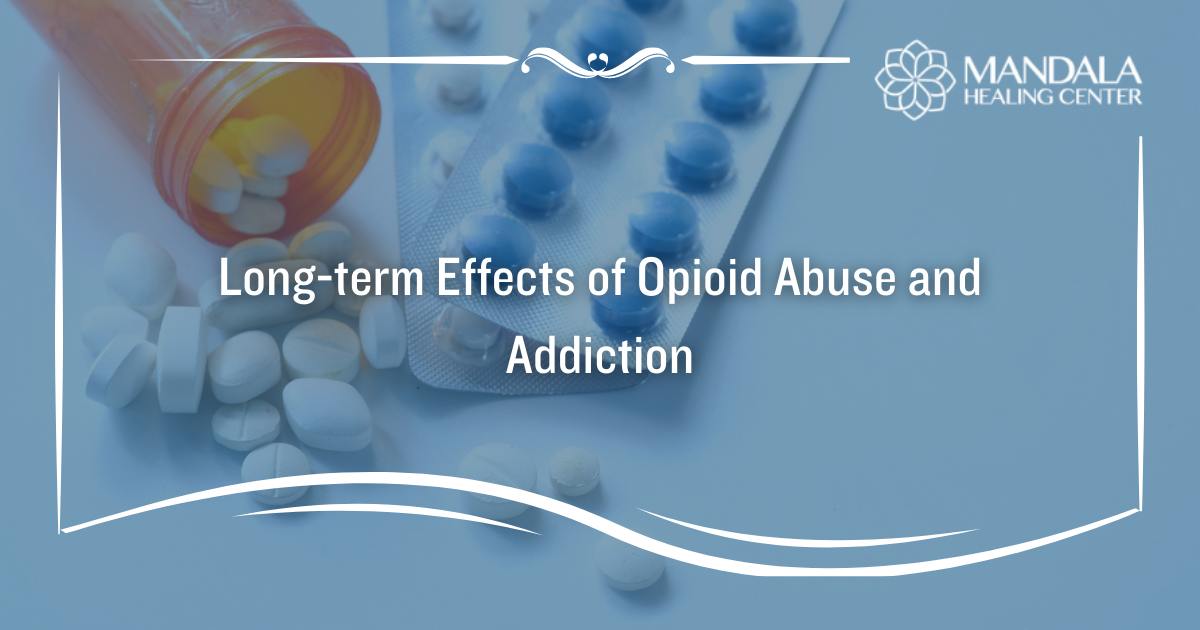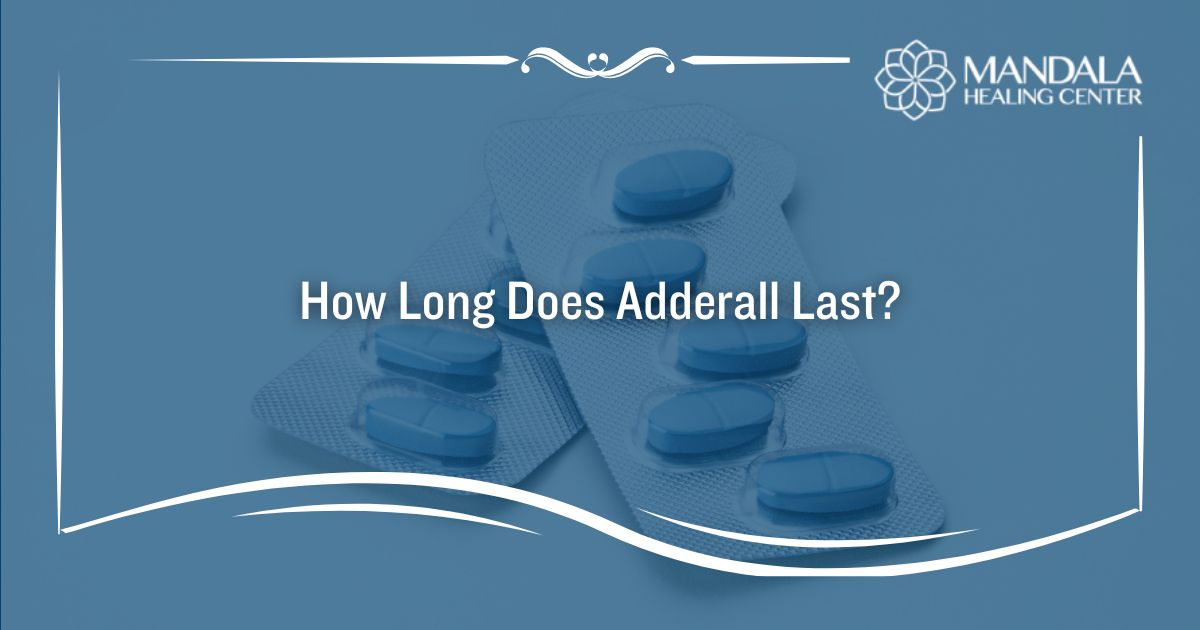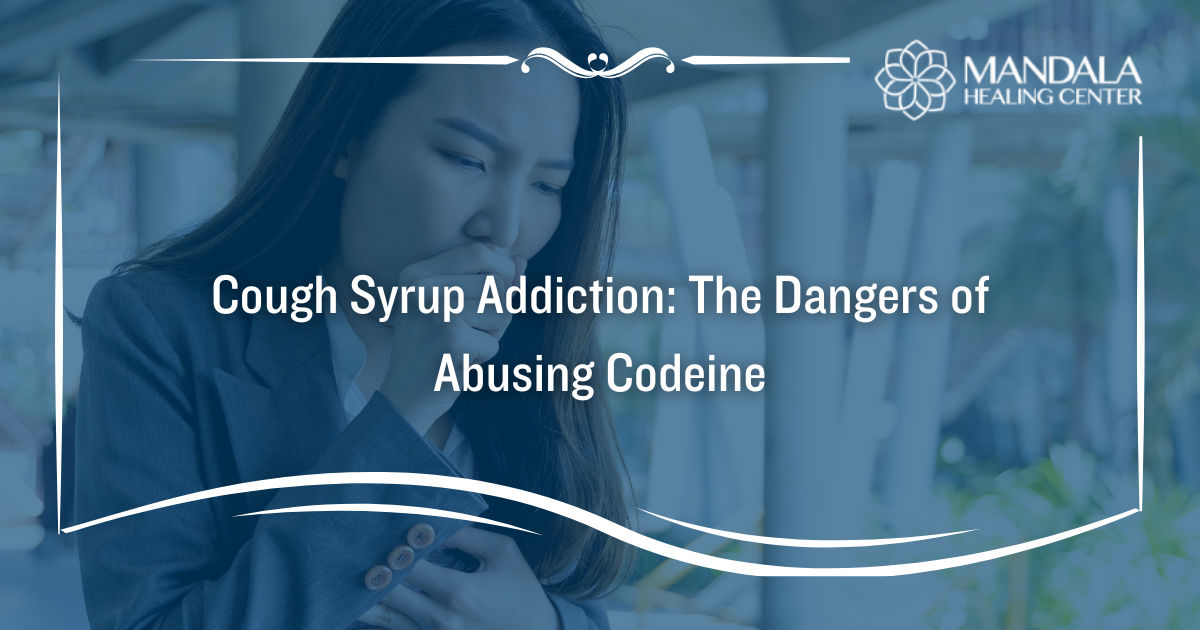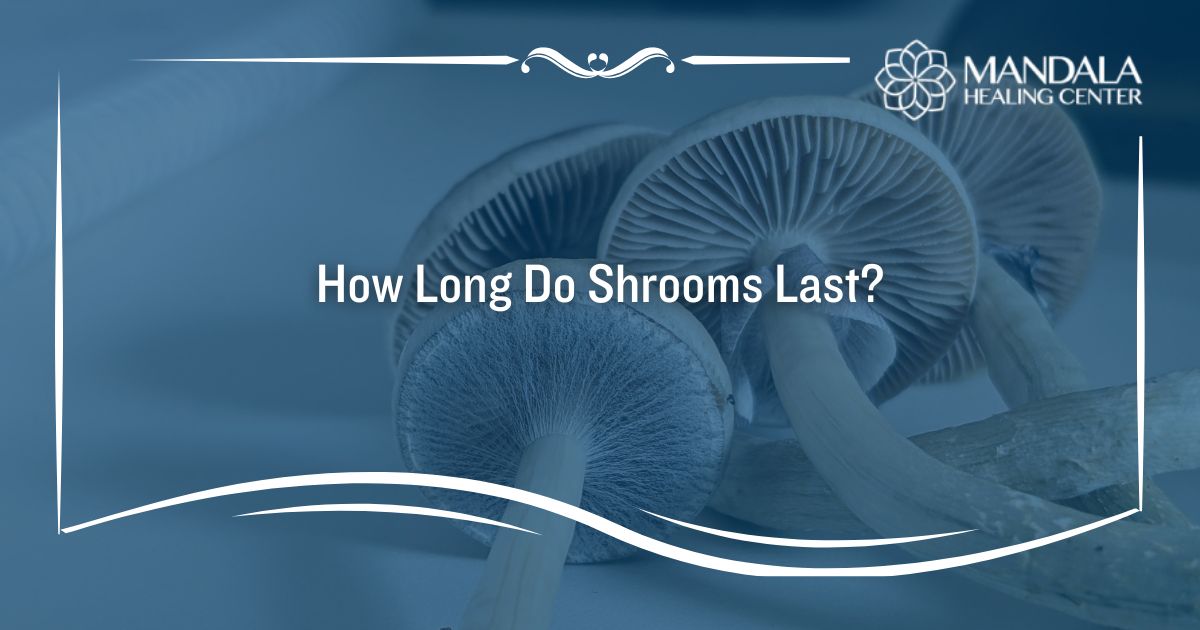Opioid use is an epidemic in the United States and levels of opioid abuse reached a crisis point, and the issue was officially declared a public health emergency in 2017. While substance abuse experts believe this was a critical step in addressing the issue of opioid use and abuse, the country has a lot of work ahead.
In 2021, an estimated 1.8% (or about 5.0 million people) had a prescription opioid use disorder in the past 12 months.[1] Those seeking treatment for opioid abuse rose 400% in the decade between 2002 and 2012, and the problem has only gotten worse since then.
Understanding the long-term effects of opioid abuse, recognizing the signs of opioid abuse, and knowing how to get help can help you make informed decisions about your substance use and treatment. Reach out to the Mandala Healing Center team now for more information about the supportive, holistic programs we offer.
What are Opioids?
Opioids are a class of drugs that are derived from opium, a chemical found in the seed pod of the opium poppy plant. Prescription opioid medications are prescribed by doctors to treat moderate to severe pain. When users take an opioid medication, the drug binds to opioid receptors in the brain and nerve cells throughout the body. The drugs prevent messages of pain from reaching the brain. The result? Users experience less perceived pain. Some common opioids include:
- Codeine
- Fentanyl
- Hydrocodone
- Hydromorphone (Dilaudid)
- Methadone
- Morphine
- Oxycodone
- Percocet
Opioid medications are generally safe when taken exactly as prescribed for a short period. Opioids are not a long-term solution for pain. Many doctors prescribe these medications to help people manage pain for a temporary issue, such as after a surgical procedure or injury.
Users may experience a sense of calm or euphoria when taking opioids. These feelings may make people want to take opioid medications for longer than prescribed, more frequently, or in higher doses. People may also take opioids recreationally, meaning without a prescription. These behaviors can lead to tolerance–needing more of a substance to get the desired effects–and addiction.
What are the Long-Term Effects of Opioid Abuse?
There are many physical and psychological long-term effects of opioid abuse.
Physical Long-Term Effects of Opioid Abuse
Opioids are central nervous system depressants that slow down activity in the body. They slow down vital functions such as breathing, respiration, and heart rate. Over time, this can take a toll on the body, resulting in:[2]
- Respiratory depression and breathing problems
- Cardiovascular disease and damage
- Collapsed veins (from long-term IV opioid use)
- Dangerously low blood pressure
- Irreversible damage to internal organs
- Brain damage or structural changes
- Heart failure
- Seizures
- Kidney and liver failure
- Cardiac arrest
- Difficult or painful urination
- Poor balance and coordination
- Digestive problems such as constipation
Psychological Long-Term Effects of Opioid Abuse
Long-term opioid abuse can also affect your mental and emotional health, especially when addiction is involved.
- Paranoia
- Insomnia
- Mood swings
- Depression
- Hallucinations
- Confusion
- Memory loss
- Personality disorder
- Poor concentration
- Suicidal ideation
Long-Term Opioid Abuse Leads to Physical Dependence and Addiction
Another common long-term effect of opioid abuse is physical dependence and addiction. People can become physically dependent on some opioids after taking them daily for as little as 2-3 weeks, resulting in symptoms of withdrawal if they stop taking them suddenly.
After dependence develops, some users increase their dose or frequency of use, eventually leading to the development of an addiction or opioid use disorder (OUD).
People may also move on to heroin if they become addicted to a prescription opioid. In fact, 80% of people who use heroin first used a prescription opioid.[3] Heroin abuse and addiction can lead to devastating harm to a person’s health, safety, and well-being and may quickly spiral into a life-threatening addiction.
Post-Acute Withdrawal Syndrome (PAWS) after Long-Term Opioid Abuse
Some people develop Post-Acute Withdrawal Syndrome (PAWS) in recovery. This means that they continue to experience the effects of opioid abuse for months or years after completing a treatment program. People who abuse opioids heavily for a long period are more likely to develop PAWS.
What are the Signs of Opioid Abuse and Addiction?
Getting treatment as soon as possible is essential to better outcomes in addiction recovery. Opioid abuse can significantly change a person’s mood, appearance, and behavior. Recognizing the signs and effects of opioid abuse may help you seek treatment sooner rather than later.
Here are some signs that someone may be living with opioid abuse or addiction.
Physical effects of opioid abuse
- Drowsiness
- Constipation
- Nausea
- Slow or shallow breathing
- Sedation
- Euphoria
- Confusion
Behavioral effects of opioid abuse
- Spending a lot of time and energy getting, using, and recovering from using opioids
- Neglecting responsibilities at school, work, or home due to opioid use
- Isolating from others or only spending time with others who use drugs
- Neglecting relationships, interests, or hobbies to use opioids
- Experiencing financial or legal trouble because of opioid use
- Continuing to use opioids despite negative consequences
The sooner you recognize the signs and effects of opioid abuse, the sooner you can get the treatment you need to overcome it.
Treatment for Opioid Abuse
Comprehensive opioid abuse treatment happens in stages. Each stage is designed to help people with substance abuse and addiction address the physical, emotional, and behavioral aspects of these conditions and learn how to live a healthy, sober lifestyle.
First, a doctor or addiction specialist will perform an evaluation to assess your needs and recommend a level of care or type of treatment.
Next, you may go through a medically-supported detox program. During detox, medical and support staff will monitor and treat your withdrawal symptoms to keep you safe and comfortable throughout the detox process.
Then, you will participate in an opioid rehab program that will use therapy, medications, skills practice, and other supportive therapies to help you identify the roots of your addiction. Your treatment program will give you the skills to live a healthy, sober lifestyle and avoid relapse. After completing a treatment program, you must create and follow an aftercare plan to stay active and engaged in your recovery for the rest of your life.
Find Help for Opioid Abuse and Addiction Now
You don’t have to live with opioid abuse and addiction. Reach out to the team at the Mandala Healing Center now to learn more about our supportive, effective holistic treatment programs.
References:












